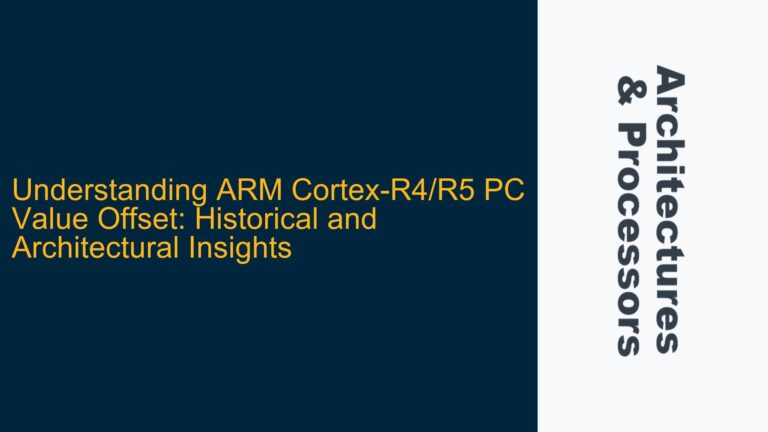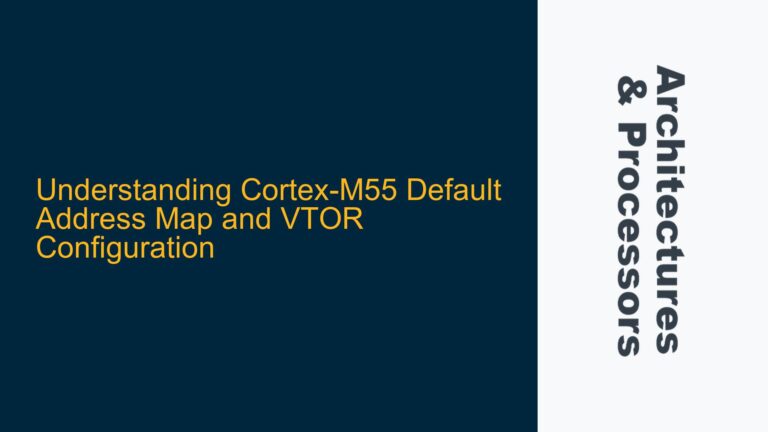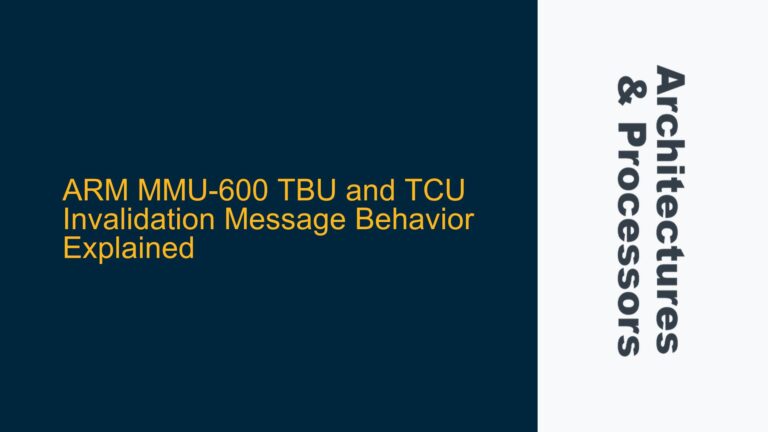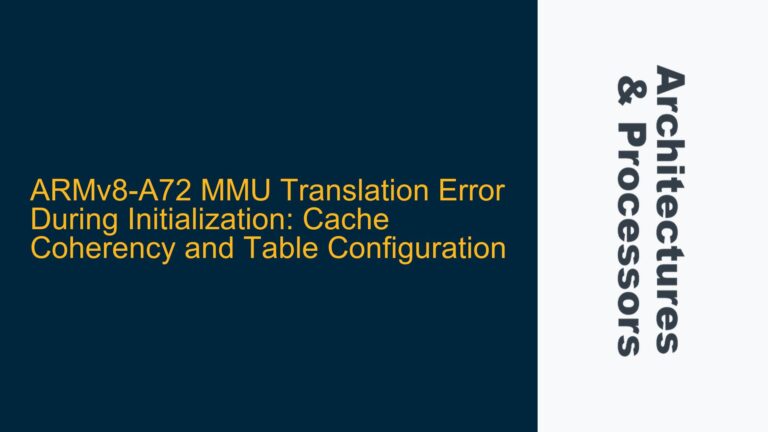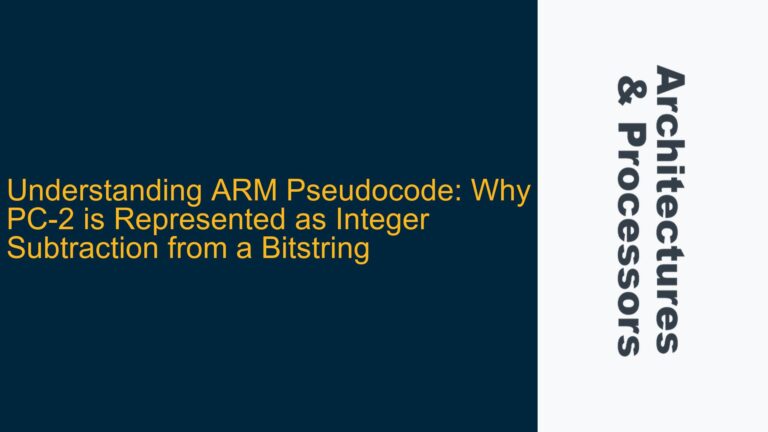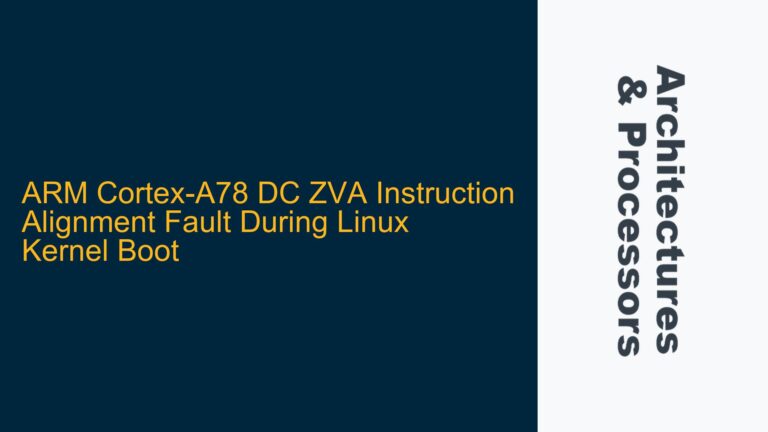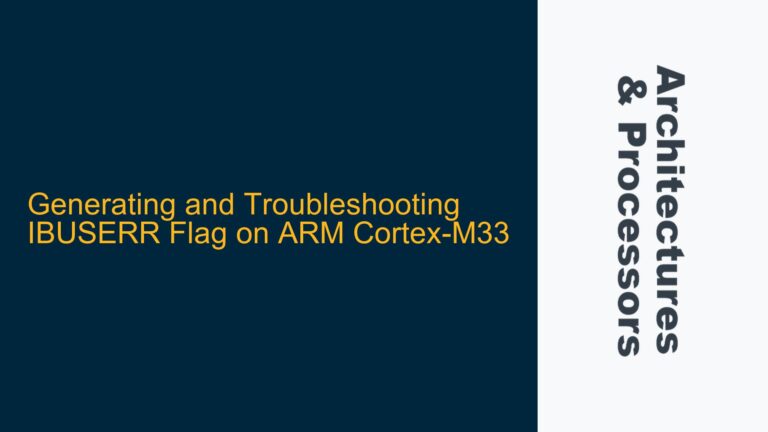ARM Cortex-R4/R5 PC Value Offset: Historical and Architectural Insights
ARM Cortex-R4/R5 PC Value Offset During Execution The Program Counter (PC) in ARM Cortex-R4 and Cortex-R5 processors exhibits a behavior where it points 8 bytes ahead of the current instruction being executed. This offset is not a bug or an anomaly but a deliberate architectural design choice rooted in the history of ARM processors and…
